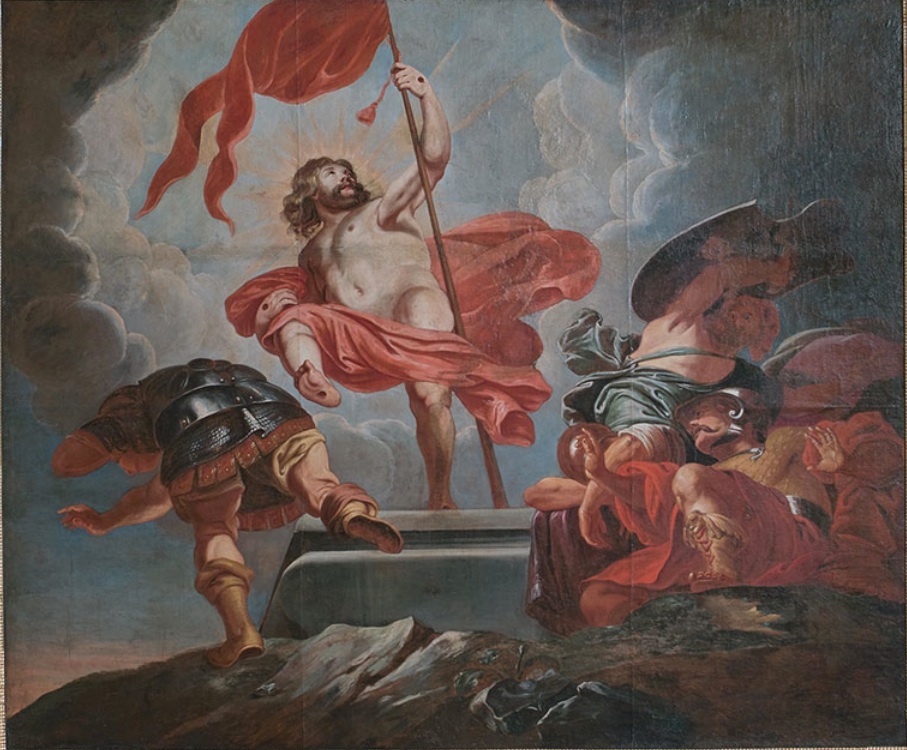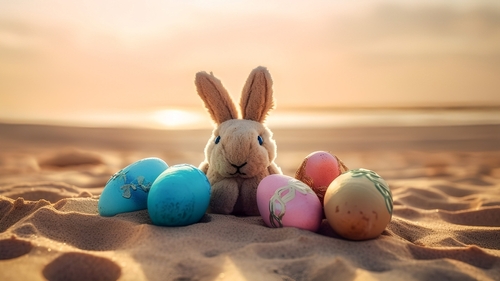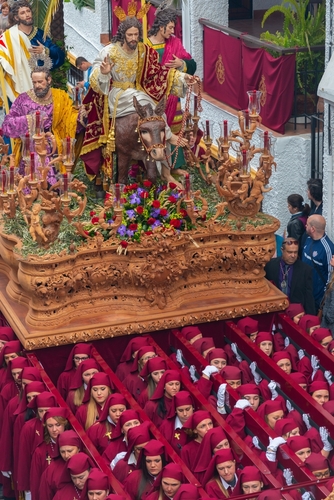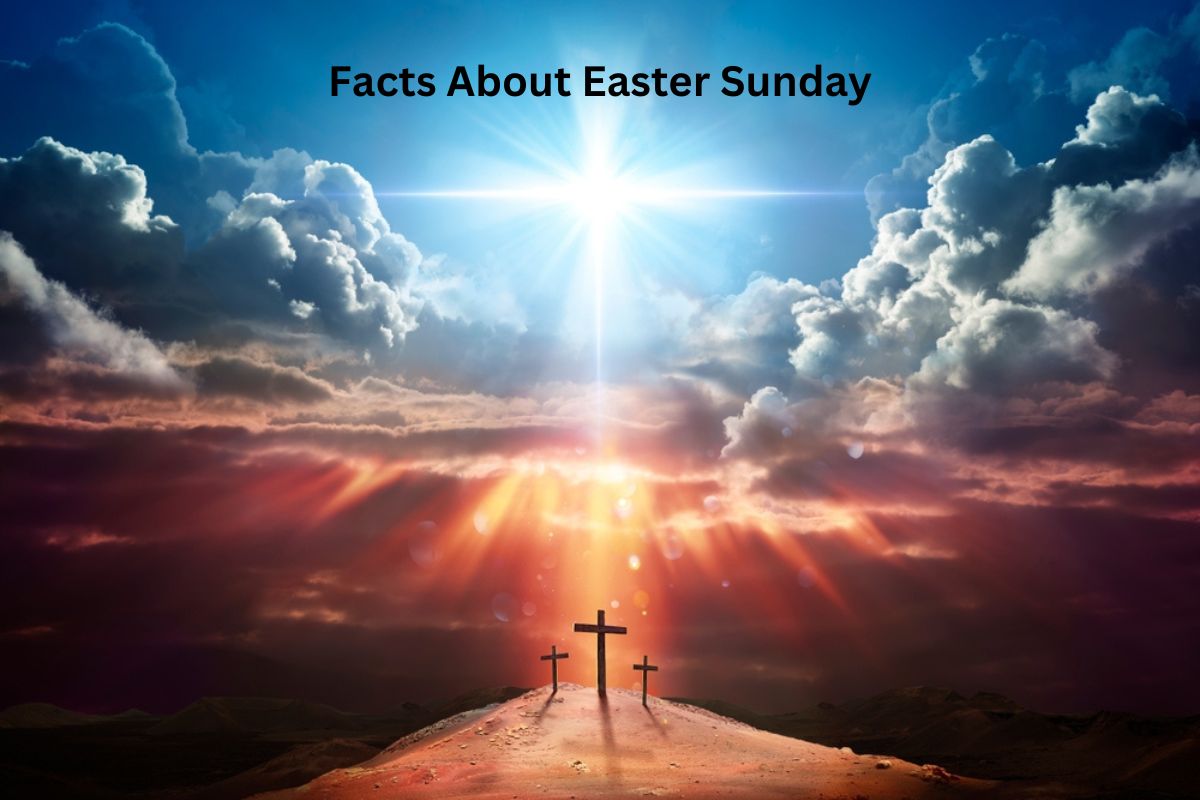Easter Sunday, a significant holiday in Christianity, commemorates the resurrection of Jesus Christ from the dead.
This pivotal event is celebrated with various customs and traditions worldwide.
In this overview, we’ll explore the diverse aspects of Easter Sunday, from its religious importance to the cultural symbols and practices that make it a cherished and festive occasion.
Easter Sunday Facts
1. Celebrates the resurrection of Jesus Christ
Easter Sunday is the most important and oldest festival in Christianity. It marks the culmination of Holy Week, which begins with Palm Sunday and commemorates the events leading up to Jesus Christ’s crucifixion and subsequent resurrection.
Also Read: Good Friday Timeline
Christians believe that Jesus was crucified on Good Friday and rose from the dead on Easter Sunday, conquering death and sin. This event is central to Christian theology, as it represents salvation and the promise of eternal life.

2. Date varies each year between March 22 and April 25
Easter Sunday does not have a fixed date because its calculation is based on a lunar calendar. It falls on the first Sunday following the first full moon after the vernal equinox, which is typically around March 20-21.
This means that Easter can occur anywhere from late March to late April. The variability of the date reflects the biblical narrative of Jesus’ resurrection, as it aligns with the Jewish Passover, which is also based on the lunar calendar.
3. Easter Bunny is a popular symbol
The Easter Bunny is a beloved symbol of Easter, especially in the United States and some other Western countries. It is a character similar to Santa Claus, believed to bring Easter eggs and candy to children on Easter Sunday.
Also Read: Timeline of Easter Sunday
The origins of the Easter Bunny are somewhat unclear but may be linked to pagan fertility symbols and the idea of rabbits or hares as prolific breeders, signifying new life.
Over time, the Easter Bunny has become a cherished part of Easter celebrations, with children participating in egg hunts and receiving Easter baskets filled with treats left by the bunny.

4. Easter eggs represent new life
Easter eggs are a prominent symbol of Easter, representing new life and resurrection. The tradition of using eggs in Easter celebrations dates back centuries.
In many cultures, eggs were forbidden during Lent, so people would boil or bake them to preserve them. Once Easter arrived, these eggs were decorated in various ways, often with vibrant colors and intricate designs.
Today, the practice of dyeing and decorating eggs is a popular Easter tradition. Some cultures even have egg-rolling contests, where participants race to see whose egg can roll the farthest without breaking.
5. Special church services are held
Easter Sunday is the most attended church service of the year for Christians. These services are typically held at sunrise or in the morning to symbolize the dawn of a new day and the resurrection of Jesus Christ.
Worshipers gather to commemorate the central event of Christianity—the resurrection—through hymns, prayers, and readings from the Bible, particularly the accounts of the empty tomb and Jesus’ appearances to his disciples.
Holy Communion, a sacred ritual, is often a part of these services, symbolizing the spiritual nourishment provided by Christ.
6. Marks the end of Lent
Easter Sunday marks the end of the Lenten season, a period of 40 days of fasting, prayer, and penance observed by many Christians in preparation for Easter. This period represents the 40 days that Jesus spent fasting in the wilderness before beginning his public ministry.
During Lent, Christians often give up certain indulgences or adopt practices of self-denial as a way of reflecting on Jesus’ sacrifice and their own spiritual growth.
Easter Sunday breaks the fasting period with a joyful celebration of Christ’s resurrection, signifying the victory over sin and death. Many Christians attend a special church service and then share festive meals with family and friends on this day.

7. Parades are held in some places
In some places, particularly in the United States and parts of Europe, Easter Sunday is celebrated with colorful parades. One of the most famous Easter parades is the New York City Easter Parade, which takes place along Fifth Avenue.
During these parades, participants often wear elaborate bonnets, hats, and costumes adorned with spring flowers, ribbons, and other festive decorations. The parades also feature marching bands, floats, and sometimes even live animals.
These parades are a way for communities to come together, showcase their creativity, and celebrate the arrival of spring and the joy of Easter.
8. Traditional Easter foods include lamb and ham
Traditional Easter foods vary by region and cultural customs, but certain dishes are commonly associated with the holiday. Lamb is a significant symbol of Easter, representing Jesus as the “Lamb of God” in Christian theology.
Roast lamb is a traditional centerpiece for Easter dinners in many Christian households. Ham is another popular choice for Easter meals, and it is often glazed and baked. Hot cross buns, a type of sweet, spiced bread marked with a cross on top, are a favorite Easter treat.
These buns symbolize the crucifixion of Jesus. Additionally, various spring vegetables and side dishes are incorporated into Easter feasts, along with desserts like Easter cakes and chocolates.
9. Celebrated in various ways worldwide
While Easter is primarily a Christian holiday, it is celebrated in various ways in different cultures and regions around the world. For example, in some Eastern European countries like Russia and Ukraine, a game called “egg tapping” or “egg knocking” is a popular Easter tradition.
Participants take turns tapping their decorated eggs against each other, and the person with an unbroken egg is considered the winner and believed to have good luck in the coming year.
In Greece, a special Easter bread called “tsoureki” is prepared and shared, often braided and decorated with colored sprinkles. These diverse cultural traditions add richness and variety to the global celebration of Easter.
10. Symbols include the cross and lilies
Easter is associated with several symbols that carry deep meaning. The cross, a symbol of Christianity, represents Jesus’ crucifixion and ultimate sacrifice. Lilies are commonly used as Easter flowers, symbolizing purity, new life, and the resurrection.
The Paschal candle is a large, lit candle used in some Christian denominations during Easter services. It symbolizes the presence of Christ, the Light of the World, and is often lit from a new fire at the Easter Vigil service. These symbols serve as powerful reminders of the religious significance and spiritual themes of Easter.
